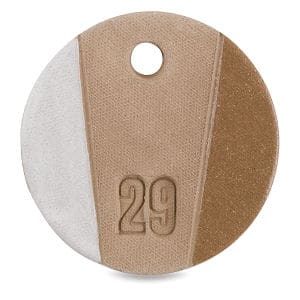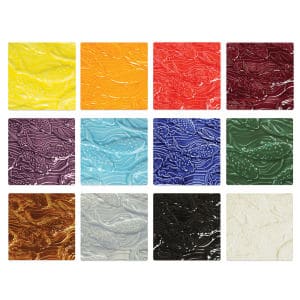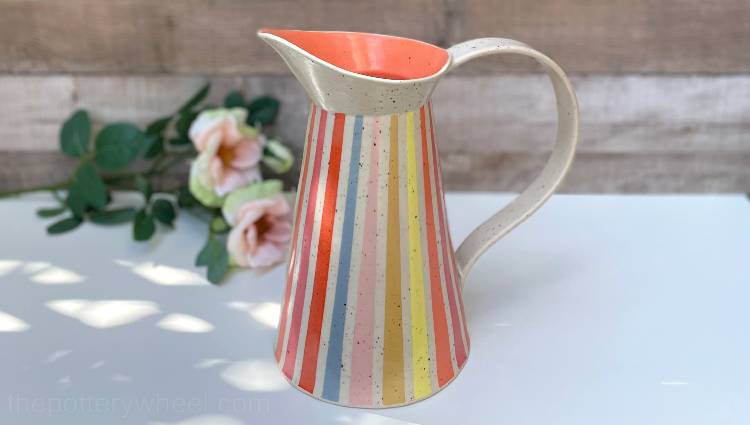Your cart is currently empty!
Can You Fire Bisque and Glazed Pots Together? Mixing Ware
Published:
Last Updated:
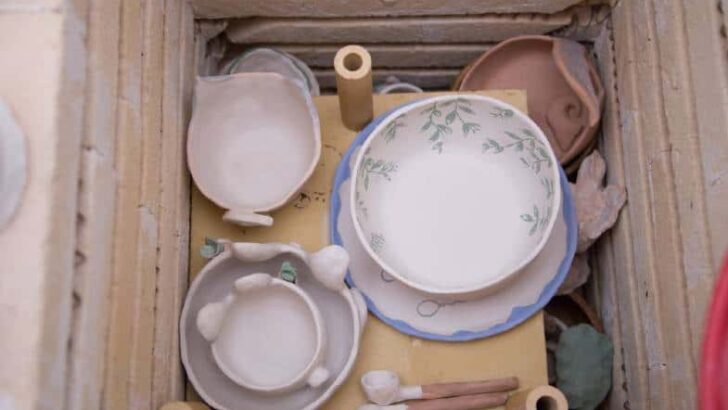
Affiliate Disclaimer
As an affiliate, we may earn a commission from qualifying purchases. We get commissions for purchases made through links on this website from Amazon and other third parties.
Sometimes it can take a while to fill a pottery kiln, and no one likes to fire a half-empty kiln if they can avoid it. So, you might have wondered if you can fire bisque and glazed pots together in one load. Here are some things it’s helpful to know…
Firing greenware and glazed pottery in one load is often seen as bad practice. However, it is very common and can be done safely. Use low fire clay and glaze that fire to the same cone. Put bisque and glaze ware on different shelves. And place bisqueware on a lower shelf.
You may be wondering who it is that frowns on mixing greenware and glaze ware in the same kiln load. And why are they frowning, if it can be done safely, what’s the problem?
Some potters are adamant this is not a practice they would adopt. And most manufacturers and kiln suppliers don’t tend to comment on the issue. However, when they do, they will advise that you don’t fire bisque and glazed pots together. The reason given for this is that they can cross-contaminate each other.
Before I go on to look at what steps you can take to fire bisque and glazed pots together. Let’s look at some of the things that can go wrong if you try mixing your kiln load.
Problems that can occur when you Fire Bisque and Glazed Pots Together
Here are some of the things that can go wrong when you fire bisque and glaze pots together:
Exploding Bisqueware
One of the dangers of firing greenware is that it can and does sometimes crack or explode in the kiln. The reason that bisqueware explodes when fired is that it is still a little damp.
Although it might look and feel dry, it may still contain some moisture. Even bone dry clay will contain water that is chemically bonded to the clay particles.
All of this needs to evaporate off and be driven out of the greenware as it fires. If the bisque fire temperature ramps up too quickly the moisture turns to steam.
When this happens, the steam fills any bubbles or gaps in the clay and expands. It is this that causes the bisqueware to explode, rather than simply having air bubbles in the clay.
The solution to this is that bisqueware needs to be fired slowly. It is preferable to candle the kiln for some hours before starting the firing program properly.
This will help any residual moisture evaporate before the temperature in the kiln reaches boiling point at 212F. By doing this you avoid the rapid expansion of any leftover water.
However, even if you take these necessary steps, it does still happen that bisque ware will explode. It’s easy to miscalculate and push the bisque ware to fire quicker than it is able to manage. Particularly if you are on a busy schedule like running an art department in a school.
If the bisque does explode and you have glazed pots in the kiln, the glazes get covered with bisque debris. Because the glaze is in a soft molten state, dust and shards will stick to the glaze surface.
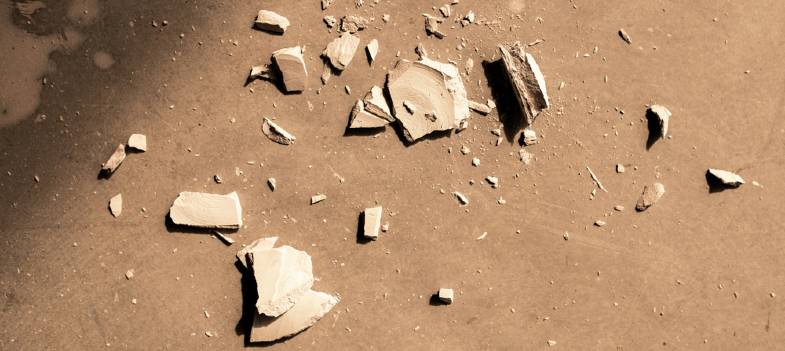
Gases and Moisture from the Bisqueware
As well as the risk of exploding bisqueware, greenware gives off gases and moisture as in a bisque fire. This happens as carbons and organic material burn out of the clay and are released into the kiln atmosphere.
Some potters have found that these gases and fumes can affect the color and look of adjacent glazes. For example, some commercial red glazes can come out a little different when you fire them with bisque pottery. Sometimes red glazes will look a bit brownish or liver-colored when you fire bisque and glaze pots together.
Another example of glazes reacting to bisqueware gases is that matte glazes containing zinc oxide can develop a crinkly surface.
Vapors from Glazes
There is also the possibility that your glazes may affect the look of your bisqueware.
Glazes also give off fumes and vapors as they melt and mature. Some potters have noted that their bisqueware will get a bit of shadowing at some points from these glaze vapors.
The Type of Clays and Glazes Used Makes a Difference
If you intend to do a mixed kiln load, you’re more limited in what clay and glaze you can use. Generally speaking, pottery is bisque fired between cone 06 and 04.
Sometimes potters will bisque fire at a higher temperature for particular technical reasons. But for the most part, bisque firing happens in the lower cone range. And cone 04 is usually considered the hottest you want to go when doing a bisque.
But what if you’re glazing mid or high fire stoneware that needs to reach cone 6 or above to mature? You will not be able to glaze fire this load with pottery that needs to be bisque at cone 04.
So, if you fire bisque and glazed pots together, you are more limited in the clay and glaze you use.
How to Fire Bisque and Glazed Pots Together
In spite of the above, many potters do fire bisque and glaze pots together. It’s particularly common practice in schools where resources and time are limited. And ceramics teachers need a quick turnaround with students’ work.
Here are some of the measures you can take to try this technique out with success.
- Make sure your greenware is bone dry.
- Use a bisque firing schedule and candle the kiln before your fire your ware. A bisque fire is slower than a glaze fire. Your glazed pot won’t be harmed by firing them slowly. But they would be harmed if you fire quickly and your bisque explodes.
So, if you fire bisque and glaze pots together, the needs of your greenware trump those of your glazed pots. The glazed pots need to be fired to meet the requirements of the bisque ware. - Put your greenware and your glazed pots on separate shelves. This should enable you to avoid any cross-contamination.
It will also help you keep the vapors and fumes from your bisque and glazed pots away from one another. As normal, you need to make sure that the glazed pots aren’t touching each other, or they will fuse together. - Place your greenware on the bottom shelf and your glaze ware above. If your greenware is above the glazed pots and it explodes, the debris and dust will fall onto the glaze. But if the greenware is below the glazed pots you can avoid this happening.
Additionally, the shelving that the glazed pots are sitting on will protect it from the exploding bisque too.
Firing Bisque and Glazed Pots Together – Suitable Clay and Glaze
You might be worried that if your glaze runs it will drip onto your bisqueware underneath. However, low fire glazes are normally quite stable and don’t tend to run easily.
Low fire glazes generally stay put. So more than likely you will not encounter problems with glaze running onto greenware underneath.
Use low fire, earthenware clay that can be bisque fired, and glaze fired in the same temperature range. For example, using clay that is happy being bisque and glaze fired at cone 05 should be fine. Remember that you will need to use a low fire glaze too.
It’s worth bearing in mind that different clay bodies and glazes do behave differently. It’s best if you are able to do a test fire before committing to a whole kiln load. This will allow to you see if your glazes cope well with being fired at the same time as bisqueware.
Final Thoughts
If you ask your kiln supplier whether you can fire bisque and glaze pots together, they might advise against it. However, it is a common technique and provided you follow the steps above, you should not encounter problems. Remember however that pottery is part art and part chemistry so you can never completely insure against the unexpected!

